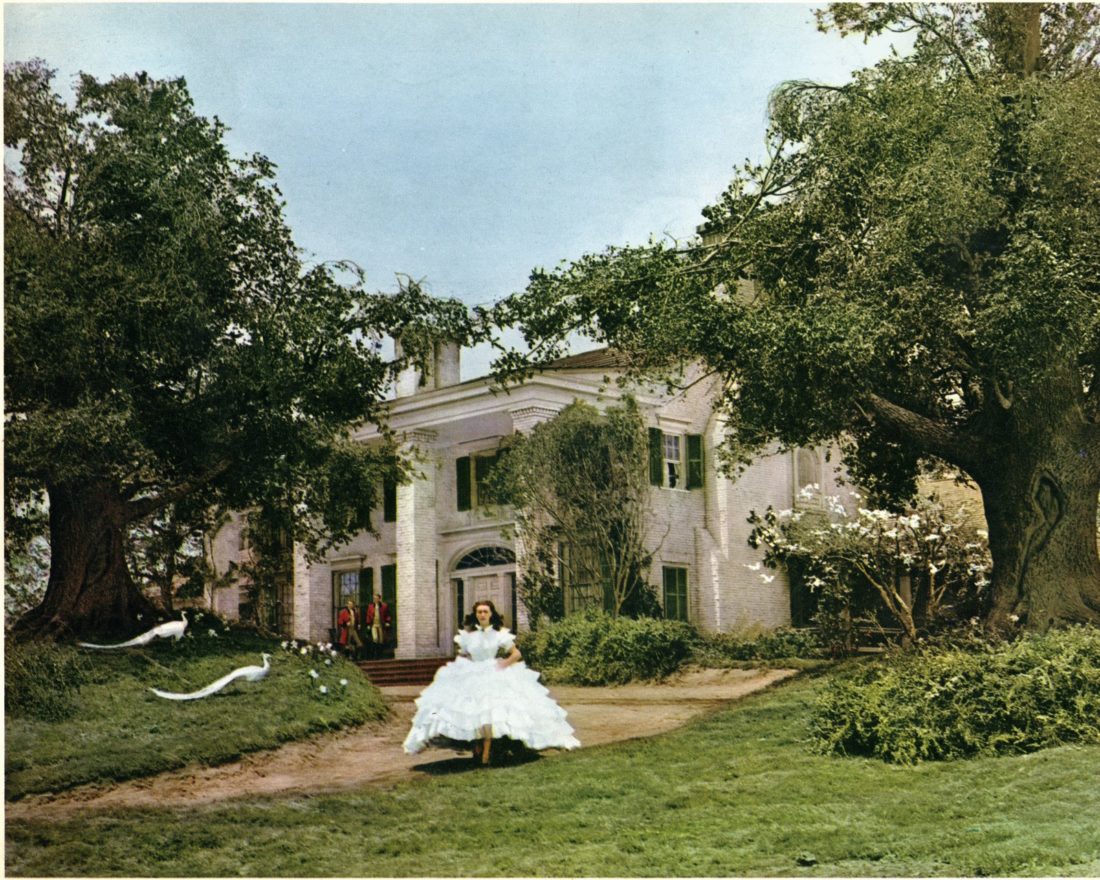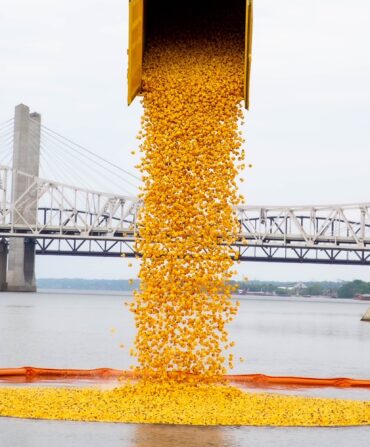From The Color Purple to The Big Chill to Steel Magnolias to Deliverance, the South has served as backdrop for dozens of Academy Award-nominated films. We decided to revisit a few ahead of the this year’s Academy Awards. And you can, too. Not just on your tablet, television, or computer screen, but actually visit—in the flesh. And because there are so many Southern-shot films that have been nominated, we decided to stick with ten famous film locations from movies that ended up taking home at least one of the little gold men.
1. Tara, Gone with the Wind
Best Actress in A Leading Role, Best Actress in a Supporting Role, Best Director, Best Writing, Best Cinematography, Best Art Direction, Best Film Editing, Best Picture
There is no real Tara. A Hollywood invention (albeit a masterful one), the Tara from the film was built on a back lot in Culver City, California. In 1959, the set was dismantled and sold. In 1979, Betty Talmadge, wife of Georgia Senator Herman Talmadge, bought the pieces and made an attempt to revive it with little success. When she died in 2005, Jonesboro, Georgia, tour guide and Civil War historian Peter Bonner took over her quest. Today, Bonner is endeavoring to restore the façade. Though it isn’t finished, you can book tours through Bonner to witness the progress firsthand.

2. Ocala National Forest, The Yearling (1946)
Best Cinematography, Best Art Direction
When Hollywood came calling, Marjorie Kinnan Rawlings made the producers promise that the film adaptation of her Pulitzer Prize-winning novel, The Yearling, would be shot on location in Central Florida—in the densely forested landscape known as the “Big Scrub” that inspired the manuscript. Most of the filming took place in what is now the heart of the Ocala National Forest and while the set is long gone, the setting is instantly recognizable.

3. Monroe County Courthouse, To Kill a Mockingbird (1962)
Best Actor in a Leading Role, Best Writing, Best Art Direction
Possibly the most iconic courthouse in America, the Monroe County Courthouse has been restored to its 1930s glory and is open to visitors. And though the film did not shoot inside the actual courthouse, set designers traveled to Monroeville, Alabama—the inspiration for the fictional Maycomb—in order to be able to meticulously recreate the courthouse on a Hollywood sound stage. That recreation won the designers an Oscar for Best Art Direction.

4. Royal Theater, The Last Picture Show (1971)
Best Actor in a Supporting Role, Best Actress in a Supporting Role
The historic Archer City movie theater featured in the film version of Texas writer Larry McMurtry’s novel, The Last Picture Show, was nearly in ruins when the crew showed up to shoot. And though they spent a good deal of money sprucing it up, the theater wouldn’t reopen until 2000 after a community push to save the landmark. Today, the Royal no longer shows films, but presents live theater productions.

5. Ryman Auditorium, Coal Miner’s Daughter (1980), Walk the Line (2005)
Coal Miner’s Daughter: Best Actress in a Leading Role; Walk the Line: Best Actress in a Leading Role
Many of the concert scenes in the Loretta Lynn biopic were filmed on the Ryman stage, where the real-life Lynn debuted her first song “I’m a Honky Tonk Girl” in 1960. The Mother Church of Country Music is also featured in Walk the Line, another country music biopic, starring Reese Witherspoon, who took home a statuette for her portrayal of June Carter Cash.

RELATED STORY: TEN MUST-SEE SOUTHERN MUSIC VENUES
6. The Mountain Lake Lodge (Virginia) and Lake Lure (NC), Dirty Dancing (1987)
Best Music, Original Song
If Dirty Dancing feels like a Southern film even though its not, that’s likely because most of the movie was shot on Southern soil, alternating between the historic Mountain Lake Lodge in Pembroke, Virginia and Lake Lure, which is tucked up in the Blue Ridge Mountains of North Carolina.

7. Jekyll Island, GA, Glory (1989)
Best Actor in a Supporting Role, Best Cinematography, Best Sound
Glory’s climactic scene depicting the battle of Fort Wagner, where Colonel Shaw, Trip, and the rest of the Massachusetts Volunteer Infantry charge into their final fight, was shot on South Dunes and St Andrews beaches on Georgia’s Jekyll Island rather than South Carolina’s Morris Island, where the battle actually took place. The film’s crew built a boardwalk to access the location, and it still stands today—it’s a peaceful seaside spot that stands in stark contrast to the famous scene.

8. Sac-o-Suds, My Cousin Vinny (1992)
Best Actress in a Supporting Role
The actual Monitcello, Georgia, convenience store where Billy is filmed forgetting to pay for a can of tuna fish that he had stuffed into his pocket—a mistake that leads to his accidental murder confession and the impetus for the film’s entire plot—is open for business once again. The roadside shop, located on Georgia State Road 16, even carries Sac-o-Suds tuna fish. Just don’t forget to pay.

9. Chippewa Square (the bench), Forrest Gump (1994)
Best Picture, Best Actor in a Leading Role, Best Director, Best Writing, Best Effects
Though the film, based on Winston Groom’s novel, is set in Alabama, most of the movie was shot around Beaufort, South Carolina. However, the bench where Tom Hanks as Forrest recounts his life story, sat on the north side of Savannah, Georgia’s Chippewa Square for the film. It has since been moved to the Savannah History Museum, but there are plenty of other seats in the square if you’re after and afternoon in the park.

10. Marfa, TX, Giant (1956), No Country for Old Men (2007), There Will Be Blood (2007)
Giant: Best Director; No Country for Old Men: Best Picture, Best Actor in a Supporting Role, Best Director, Best Writing; There Will Be Blood: Best Actor in a Leading Role, Best Cinematography
That the tiny ranching town in West Texas has become something of an artists’ colony—with a contemporary art museum, more than a dozen galleries, and large-scale installations dotting pastures and fields—is thanks in part to the attention of Hollywood filmmakers. The relationship began in 1965, when Elizabeth Taylor Rock Hudson, and James Dean (in his final role) arrived to shoot the Texas epic, Giant. The remains of the mansion built for the film still stand on Ryan Ranch outside of town. Many other movies have filmed here—there’s something about the light in this corner of the Lone Star State—but two other Oscar-winning films, There Will Be Blood and No Country For Old Men, immortalized the place like none before. Nearly all of No Country For Old Men was shot here.









